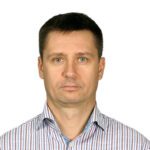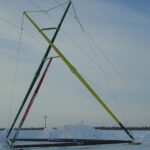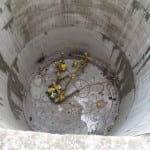For the progressive development of modern civilization, access to minerals is critical. The main recoverable reserves of such minerals are often located at high latitudes. For example, a significant number of the world’s hydrocarbon deposits are located above 60 degrees North latitude.
Our company, Noyabrskie Power Grids, is also located in this area, and its core business is the high-quality and uninterrupted power supply to oil and natural gas industry facilities. The company operates in a hard-to-reach area with numerous swamps and lakes, in an area with complex geotechnical and geocryological conditions. Soils located in the zone of seasonal freezing are widespread here, and there are areas of permafrost soils.
The permafrost is formed in the areas of peat, loamy, and sandy sediments with considerable moisture. Soils located in the seasonal freezing zone have frost heave properties, which are shown in the irregularity of surface elevation of the freezing soil layer, replaced with the subsidence of the latter when thawing. The freezing depth is determined by the lithological composition of the surface layer, its pre-winter moisture content, as well as the snow accumulation. The normative depth of freezing varies from 9 feet to 13 feet.
Such extreme natural conditions pose non-standard challenges for power engineers. The most serious damage to overhead power lines in the northern region is caused by a frost heave. Power engineers of the North first encountered this problem in Russia at the end of the 1980s during the search for the causes of failure of pile foundations of power transmission towers. The early 1980’s recommendation of painting reinforced concrete piles with silicone-organic enamel and application of plastic greases before immersion did not provide the proper result.
From 1992 to 2000, JSC Energosetproject Institute (Moscow) carried out research work aiming to identify the primary causes of the emergency condition of overhead power line failures (Figure 1) in the districts of JSC Tyumenenergo Noyabrskie Power Grids. The research results showed that the failure of overhead line towers was caused by a complex impact of various natural factors including damp soils, degradation of permafrost in the location of towers, frost heave, and wind loads on the tower structure elements.
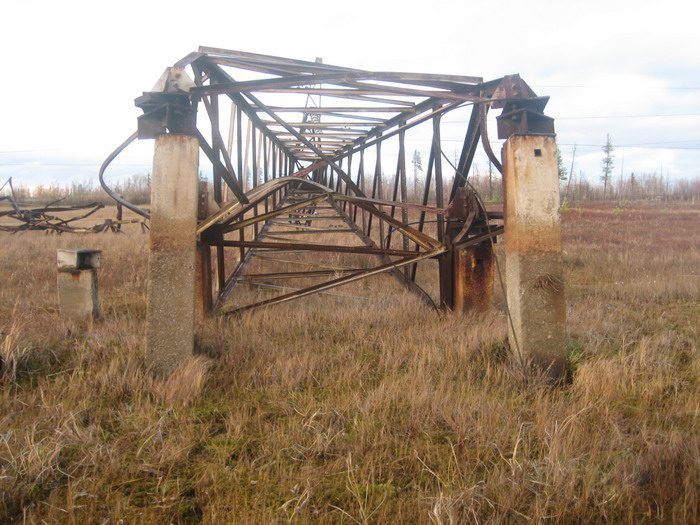
Under the effect of freezing and thawing, the soil ends up being compacted down to the frost line. As the contact area of compacted soils increases in the freezing zone, the effect of the tangential forces of frost heave increases, and it was observed that in five to six years the heaving soils begin to push piles upward—up to 20 inches per season. The foundation loses its bearing capacity, which can lead to the collapse of supports under the influence of wind loads.
Based on the results of these studies, a patented method was subsequently developed to strengthen tower foundations with cruciform piles (Figure 2). Subsequently, several anchoring devices were developed to carry out repair and restoration works at Noyabrskie Power Grids facilities, based on the method described above.
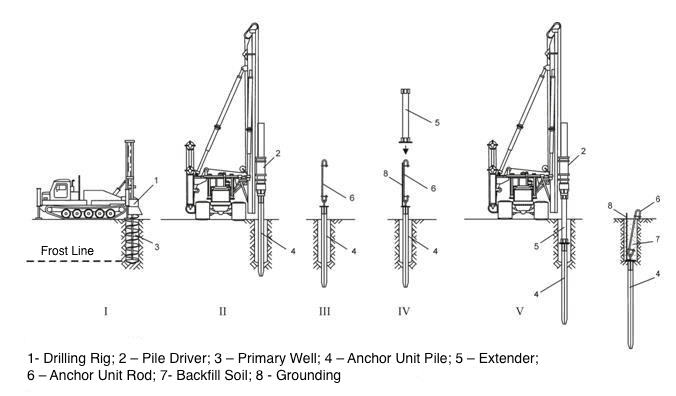
The work must be preceded by a geodetic alignment of the axes for the installation of the cruciform piles. The range of pile heights of strengthened foundations may vary from 20 inches to 80 inches above the surface. Reinforced foundation piles shall not be sloped toward the cruciform pile location. The depth of the cruciform pile must be at least 10 feet. Subsequent years of observation during scheduled overhead line inspections of foundations reinforced in this manner have shown either no or very little displacement of pile foundations of power line towers.
In addition to the use of cruciform piles to strengthen tower foundations, they can also be used for new construction and reconstruction of power distribution lines. Cruciform piles do not have issues with bulging due to their shape, which allows them to hold the load firmly and without any movement in the ground.
Such a pile has a number of significant advantages. One is that when immersed in the ground, it does not violate its structure. Its design features determine the increased resistance, in comparison with conventional reinforced concrete piles, to the frost heave forces. Technical and economic characteristics of the cruciform section pile that are also of great importance include compactness, comparatively low weight, high adaptability of manufacturing and installation into the ground, as well as low labor and energy consumption of the installation.
JSC Tyumenenergo Noyabrskie Power Grids were the national experimental site for the implementation of the project of unified foundation designs based on metal piles of open cruciform section for construction and reconstruction of 35-kV to 220-kV power lines. The work was carried out jointly with the developer of this technology—JSC Energosetproject Institute (Moscow).
There were full-scale tests for all kinds of loads conducted on the testing area of the service of maintenance and repair of high-voltage lines of Noyabrskie Power Grids, which showed that the actual load-carrying capacity of piles with a developed side surface driven into undisturbed soil is equal to the calculated data. In other words, the test data is fully consistent with the expected results. The “green light” was given for the use of cruciform piles in the construction and reconstruction of overhead power lines.
Power engineers in our region, while continuing to work under difficult conditions, are in constant search of new solutions to increase the reliability of power supply to oil and natural gas facilities important to the national economy. This work is also of great practical importance for the global power industry. All the advantages of cruciform piles, which were proved as the result of tests conducted at our testing grounds, are fully true for geotechnical conditions not only in the north of Western Siberia, but also in other regions with similar geological and climatic conditions, such as mountainous areas of Scandinavia, a large part of Canada, almost the entire state of Alaska, and high mountainous areas of the Rocky Mountains in the U.S.
—Konstantin Ivanov is deputy CEO for Development with JSC Rosseti Tumen. He has a Master of Science degree in Power Engineering, and is a well-known engineer and manager in the Russian power industry with nearly 20 years of experience in the field.

